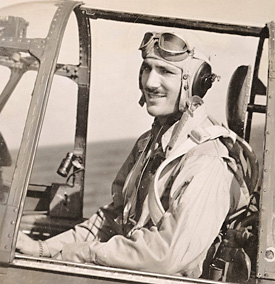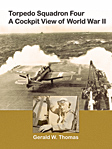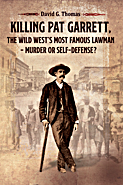|
|
 |
|
|
|
|
 |
|
Dedicated to those who
served in VT-4, VB-4, VF-4,
VMF-124 and VMF-213
|
|
|
 |
 |
|
Lt(jg) Edward S. Binder
|
 |
 |
|
By Arthur Bergida Binder
|
 |
 |
|
 Edward S. Binder, a happy-go-lucky kid, designed and built rubber and gas powered model planes -- balsa models whose delicate struts were covered with tissue paper or, sometimes, iridescent films of collodion. At seventeen he left his motherīs Jersey City home for the Agriculture School at the University of Georgia; he worked part-time and summers as an A&E mechanic for flying lessons. Near his twenty-first birthday, July 1941, now a certified flight instructor, he moved with his new bride to Maryville, Missouri. Six months after Pearl Harbor, with a baby on the way, he enlisted in the Navy and was stationed first in Quantico, Virginia -- where he tested ordnance; then, in Pensacola, Florida. He applied for combat duty and was assigned to Squadron VT-4 of Admiral Marc Mitscherīs Task Force 58. Edward S. Binder, a happy-go-lucky kid, designed and built rubber and gas powered model planes -- balsa models whose delicate struts were covered with tissue paper or, sometimes, iridescent films of collodion. At seventeen he left his motherīs Jersey City home for the Agriculture School at the University of Georgia; he worked part-time and summers as an A&E mechanic for flying lessons. Near his twenty-first birthday, July 1941, now a certified flight instructor, he moved with his new bride to Maryville, Missouri. Six months after Pearl Harbor, with a baby on the way, he enlisted in the Navy and was stationed first in Quantico, Virginia -- where he tested ordnance; then, in Pensacola, Florida. He applied for combat duty and was assigned to Squadron VT-4 of Admiral Marc Mitscherīs Task Force 58.
After the war he returned to Jersey City and, with two other Naval aviators, John Barteluse and Bill Christie, built a seaplane base and flight school on vacant land near Roosevelt Stadium, Jersey City.
"Jersey Skyports" opened with three surplus Piper Cubs; later a Republic Seabee. The men gave it all they had; but, within five or six years, their business failed.
By 1950, Edwardīs wife and daughter had returned to Georgia.
He remarried and took his wife and son to Hasbrouch Heights, New Jersey, near Teterboro Airport. Starting in 1951, he directed, then owned, the Pilots Employment Agency, placing perhaps a thousand or more fliers with airlines and private companies.
Meanwhile, he flew DC-4s, then 707s, with Pan American Airways. He purchased a red Porterfield tandem trainer -- like those he flew in Maryville, 1941-42.
In 1962, after an injury, he retired from Pan Am.
He divorced -- and five years later moved to Florida, where he remarried. His second daughter, a teenager, visited south once or twice. But for several years his New Jersey family lost contact. In 1973, his children were surprised to learn that their father had died, just days before -- after a week or more in the hospital -- of liver cancer.
But that is not the end of the story. It is not even the most important part. The sadness of these details should not obscure; only seeming to overshadow the spiritual greatness of the man, which the appended poem tries to explore.
The true tenor of this tale is not that war wreaks changes; but that enduring love proves itself with sinews strengthened below. This shining through of the essence is the true legacy of the man.
I remember his playfulness and joy when, in 1948 or so, in that yellow Piper Cub floatplane, he took me through a sudden Immelmann.
|
 |
 |
 |
 |
 |
 |
|
Jolly Ed
My brotherīs happiest days, I think,
were with the Navy. What he experienced,
of task force aviation under fire,
I can have only the faintest idea.
He brought it home in a box
and kept it there
with his service .38 and
a Japanese semi.
His squadron knew him as "Jolly Ed."
When -- sixty years later -- his
siblings and daughters heard of this,
they couldnīt believe it. Theyīd never
seen him jolly.
A strong, intense, bold, loving soul,
flew DC-4s, 707s for Pan American.
Divorced, moved to Florida.
Died in 1973, of liver cancer.
His New Jersey kinfolk almost didnīt know.
Funny thing: my sister dreamed of him
the night before someone I think it was
a cousin of my brotherīs ex-wife
phoned north to say sheīd
seen it in a local paper. "Last night ..."
Later, his third wife got word to us --
heīd asked that a
Navy plane
scatter his ashes
over the Atlantic. Itīs
just one ocean that covers the earth.
Donīt know if he was happy.
Donīt know if he was successful.
Donīt know anything at all
about his life in Florida.
But, importantly, this must be added.
Above all, this must, surely, be added:
A strong, brave spirit does not die.
But stays until his work is done.
Greatly loves, who greatly loved.
Thirty years after heīd died --
the morning after the astronauts
tore, streaking through the sky --
I dreamed of phoning my brother,
trying to dial him up in New Jersey,
across the rivers, Hudson and Passaic,
trying to dial him, to talk, to speak,
until I realized, "I canīt phone him.
Heīs dead." Iīd never dreamed
of him before or since. And I think
it was his way of letting us know:
More here than meets the eye.
This is what the stalwarts do.
Struggle through to let us know.
Those who knew him at war
know he did what had to be done,
despite the opposition.
Pressed on, despite the difficulty.
Served with those he loved, who loved him.
Arthur Bergida Binder, 2005
|
|
|
|
 |
|
|
Lt(jg) Edward S. Binder with his TBM, 1944
|
|
 |
|
|
|
The Combat Record of Lt(jg) Edward S. Binder
Torpedo Squadron Four
(Summarized from the Archives by Gerald W. Thomas)
Lt(jg) Edward S. Binder joined VT-4 when it when it was reformed and enlarged on the East Coast in April, 1944. The Squadron, with the rest of the Air Group, then moved to the West Coast and was transported to the Hawaiian Islands in July.
Binder was in the leading section of a VT-4 night flight on 21 September 1944 when the other 3 planes of his division collided in mid-air and crashed into the sea. No survivors were located in follow-up searches and the Squadron lost 9 airmen. (See "Tragedy Strikes Night Operations" in Torpedo Squadron Four: A Cockpit View of World War II.)
Aboard the USS Bunker Hill: In his first combat on 13 November 1944, Binder led a 4-plane section in a torpedo drop on a dry-dock in South Manila Bay. Ed's crewmen were ARM3c W. Jenkins and AMM3c A. B. Trafaglia. The combined attack completely destroyed the bay side of the dry-dock.
Aboard the USS Essex: Binder, with the same crew, on 25 November 1944 carried four 500-pound AP bombs in a strike on Japanese ships near Santa Cruz in the Philippines. The combat report states, "The fourth division, led by Lt(jg) Binder, split its attack with 2 planes attacking the auxiliary transport and 2 planes attacking the LSM. Lt(jg) Binder straddled the bow of the LSM with two bombs."
On 16 December 1944, a VT-4 group attacked Lingayen Airfield on Luzon. Binder's crewmen for this strike were Jenkins and ACMM R. D. Biddle.
Eiko Airfield on Formosa was hit on 4 January 1945. Binder, with Jenkins as turret gunner, carried 100-pound GP bombs in this attack.
On 6 January 1945, Binder (with Biddle) was with a VT-4 group that attacked a convoy in the Philippines.
9 January 1945, D-Day for Luzon: Another VT-4 strike on airfields in the Philippines, Jenkins was turret gunner in Binder's Avenger.
On 12 January 1945, VT-4 attacked ships in the Saigon River, near Cap St. Jacques, dropping torpedoes at 250 knots from an altitude of 250 feet. Binder, with Jenkins, noting that all the larger vessels were under attack, proceeded southward a short distance and dropped on a DE, scoring a hit. Lt(jg) Binder was awarded a Distinguished Flying Cross for this action. All of the ships attacked by VT-4 were sunk.
On 16 January 1945, three torpedo planes splashed down in the South China Sea after a strike on Hainan Island. One of these planes was piloted by Binder with Biddle in the turret. Binder and his crewman were picked up by the USS Callahan before dark on the same day.
Several Japanese destroyers were attacked on 21 January 1945. Binder led a 3-plane section for this glide bombing run. Jenkins was in the turret.
Mawatari, Japan. 16 February 1945. First carrier-based strikes on the Japanese Mainland (since Doolittle). Binder, with Jenkins, carried 18 100-pound GP bombs for this strike.
17 February 1945. Another strike on Japan. This time the Nakajima Tama Aircraft factories. VT pushed over from 14,000 feet in steep glides (and cold weather).
"Bombs and Propaganda for Japan" in Torpedo Squadron Four: A Cockpit View of World War II summarizes VT-4 involvement in attacks on 25 February 1945. This time Biddle manned the turret for Binder.
Binder and Biddle were a part of the final strike for Air Group 4 in the Pacific. The attack was launched on 1 March 1945. The target was Naha Airfield on Okinawa. We lost one torpedo plane and one fighter in the strike.
|
|
|
|
 |
|
|





 Edward S. Binder, a happy-go-lucky kid, designed and built rubber and gas powered model planes -- balsa models whose delicate struts were covered with tissue paper or, sometimes, iridescent films of collodion. At seventeen he left his motherīs Jersey City home for the Agriculture School at the University of Georgia; he worked part-time and summers as an A&E mechanic for flying lessons. Near his twenty-first birthday, July 1941, now a certified flight instructor, he moved with his new bride to Maryville, Missouri. Six months after Pearl Harbor, with a baby on the way, he enlisted in the Navy and was stationed first in Quantico, Virginia -- where he tested ordnance; then, in Pensacola, Florida. He applied for combat duty and was assigned to Squadron VT-4 of Admiral Marc Mitscherīs Task Force 58.
Edward S. Binder, a happy-go-lucky kid, designed and built rubber and gas powered model planes -- balsa models whose delicate struts were covered with tissue paper or, sometimes, iridescent films of collodion. At seventeen he left his motherīs Jersey City home for the Agriculture School at the University of Georgia; he worked part-time and summers as an A&E mechanic for flying lessons. Near his twenty-first birthday, July 1941, now a certified flight instructor, he moved with his new bride to Maryville, Missouri. Six months after Pearl Harbor, with a baby on the way, he enlisted in the Navy and was stationed first in Quantico, Virginia -- where he tested ordnance; then, in Pensacola, Florida. He applied for combat duty and was assigned to Squadron VT-4 of Admiral Marc Mitscherīs Task Force 58.